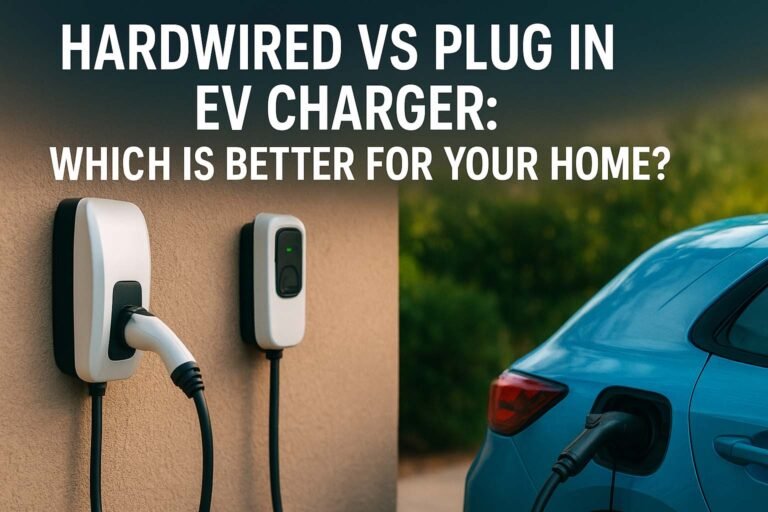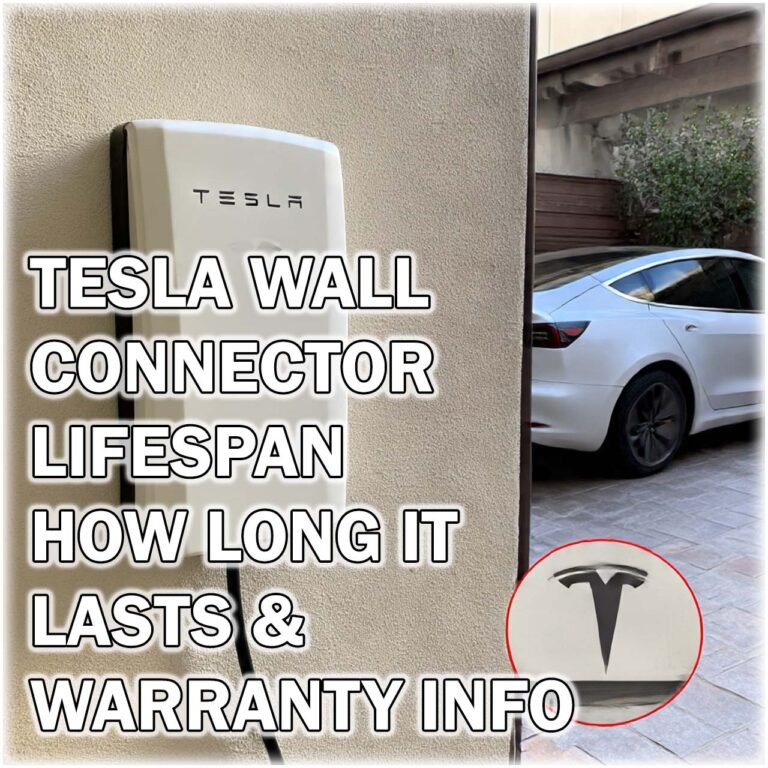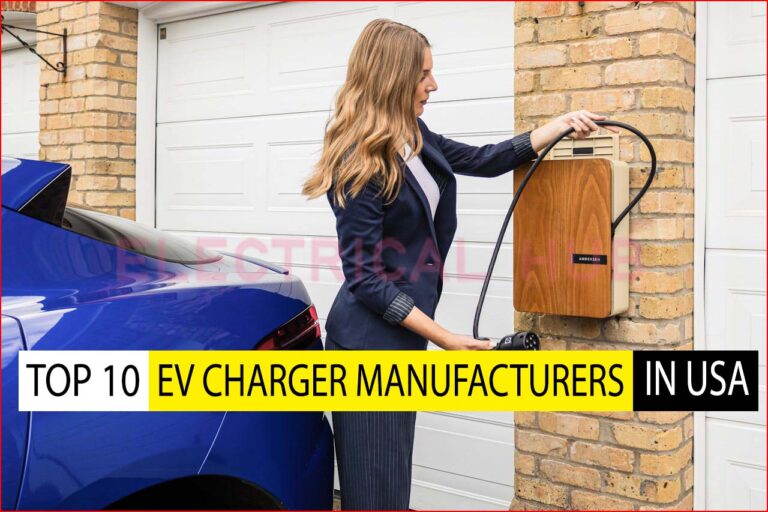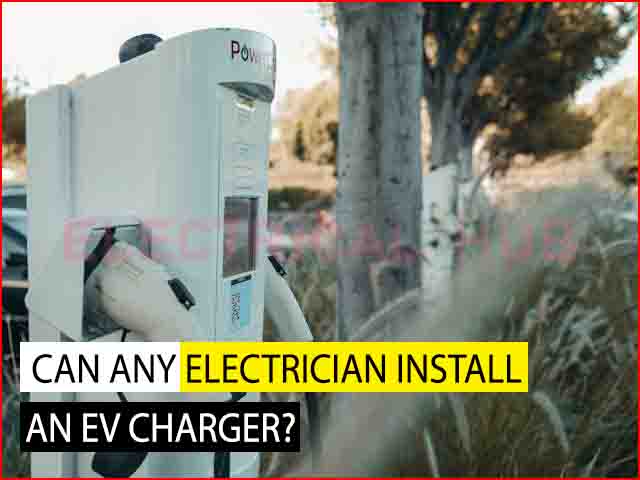Portable EV Charger Level 2: A Comprehensive Guide
As electric vehicles (EVs) become increasingly popular, the demand for efficient and convenient charging solutions rises. One such solution is the portable EV charger level 2, which offers significant advantages for EV owners. Unlike standard home chargers, Level 2 chargers are faster and more reliable, making them an ideal choice for both residential and commercial use.
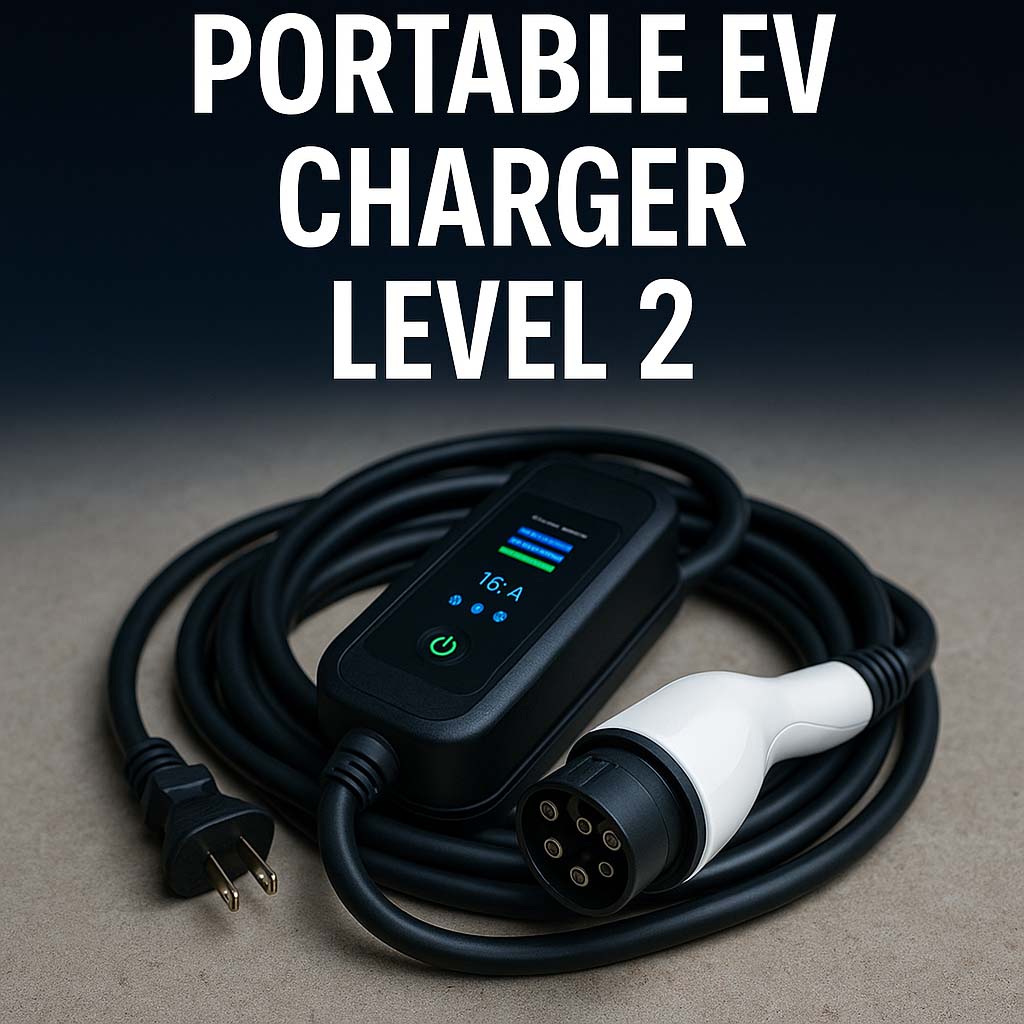
In this article, we will dive deep into the technical aspects of portable Level 2 EV chargers, discuss their benefits, compare tethered vs. untethered models, and explore how to optimize charging based on factors like EV charger load calculation and car charger demand factor.
What Is a Portable EV Charger Level 2?
A portable EV charger level 2 is a type of electric vehicle charging equipment designed to work with Level 2 outlets, which provide a higher voltage (typically 240 volts) compared to Level 1 chargers (120 volts). This higher voltage allows for faster charging, reducing the time it takes to recharge an electric vehicle.
Portable EV chargers, unlike stationary ones, can be easily moved between different locations. They are perfect for homeowners who want the flexibility of charging their vehicle at home, work, or even on the go.
How Does a Portable EV Charger Level 2 Work?
A portable EV charger level 2 operates by converting alternating current (AC) power from the outlet into direct current (DC) power, which is what the EV battery requires. The charger is plugged into a 240-volt outlet, and it transfers the electricity through the vehicle’s charging port. The onboard charging system of the EV then converts the AC to DC and stores it in the battery.
Key Features of Portable EV Charger Level 2
- Fast Charging: Level 2 chargers provide up to 25 miles of range per hour of charging, which is significantly faster than Level 1 chargers.
- Portability: Unlike stationary chargers, portable units can be easily carried or stored, making them ideal for travel or multiple charging locations.
- Compatibility: Most Level 2 portable chargers are compatible with various EV models, offering flexibility for EV owners.
Benefits of a Portable EV Charger Level 2
Using a portable EV charger level 2 comes with a number of advantages, both practical and technical. Here’s why you should consider investing in one:
Speed of Charging
One of the biggest advantages of using a portable EV charger level 2 is the speed. These chargers can charge an electric vehicle much faster than a standard Level 1 charger. While a Level 1 charger typically adds around 3-5 miles of range per hour of charging, a Level 2 charger can add up to 25 miles of range per hour.
This increased speed is beneficial for EV owners who need to charge their vehicle overnight or need to get back on the road quickly.
Learn more about 7kW EV Charger Cost
Flexibility and Convenience
A portable charger offers flexibility in where and how you charge your electric vehicle. Whether you’re at home, at the office, or even visiting family and friends, you can take your charger with you. This is particularly useful for individuals who live in apartments or other housing situations where installing a stationary charger might be difficult.
Increased Battery Lifespan
Level 2 charging is typically less stressful on the EV’s battery compared to using public DC fast chargers. Charging at a slower rate helps to preserve the health of the battery, ensuring it lasts longer and operates efficiently over time.
Cost Efficiency
While installing a Level 2 charging station at home may incur a one-time installation cost, using a portable Level 2 charger can save you money in the long run. Portable chargers often cost less than having a dedicated home charging station installed. Additionally, many portable chargers are designed to be energy-efficient, which can help keep your electricity bills lower.
Tethered vs. Untethered Portable EV Charger Level 2
When choosing a portable EV charger level 2, you will encounter two main types: tethered and untethered chargers. The choice between these two depends on your preferences and specific charging needs.
Tethered Charger
A tethered charger comes with a built-in cable that is permanently attached to the unit. This makes it more convenient as you do not have to worry about carrying an additional cable around. Tethered chargers are a popular choice for home use because they are simple to operate and always ready to use.
However, tethered chargers can be limiting if you need to use them with different types of connectors or if you need a longer cable to reach your car’s charging port.
Learn more about Best Portable EV Charger
Untethered Charger
An untethered charger, on the other hand, comes without an attached cable. This gives you the flexibility to use different cables based on the type of EV you own or the length of cable you need. Untethered chargers are particularly useful for commercial locations where multiple EVs with different connectors may need to be charged.
While untethered chargers provide more flexibility, they also require you to carry an extra cable around, which can be less convenient for some users.
Technical Insights into Portable EV Charger Level 2
Understanding the technical specifications and factors involved in selecting a portable EV charger level 2 can help you make an informed decision.
Charging Power and Efficiency
The power output of portable EV chargers typically ranges from 3.3 kW to 7.6 kW. A charger with higher power output will charge your EV faster, but it will also require a dedicated circuit to handle the increased load. If you plan on using the charger in different locations, ensure that the outlets you intend to plug into can support the required voltage and amperage.
Safety Features
Safety is a top priority when choosing an EV charger. Look for portable chargers that are UL-certified (Underwriters Laboratories), as this ensures the unit has passed rigorous safety tests. Other important safety features include overcurrent protection, temperature sensors, and automatic shut-off in case of electrical faults.
Learn more about Should You Invest in a Level 2 EV Charger?
Cable Length
The cable length of a portable EV charger is an important factor to consider. Depending on where you plan to charge your vehicle, a longer cable may be necessary to reach the charging port. Ensure that the charger comes with a cable that is long enough to provide flexibility but not too long to become cumbersome.
EV Charger Load Calculation
When selecting a portable EV charger level 2, it’s important to understand the EV charger load calculation to ensure that your home’s electrical system can handle the additional load. A Level 2 charger requires more power than a standard electrical outlet, so you need to ensure that your circuit can support it.
To calculate the load, you will need to determine the amperage of the charger and the outlet. Most Level 2 chargers use 240V circuits, and the amperage typically ranges from 16A to 50A. Multiply the voltage (240V) by the amperage to get the power output in watts.
For example, if you have a 30A charger, the calculation would be:
240V * 30A = 7.2 kW.
This calculation ensures that your home electrical system can handle the increased load without tripping circuit breakers or causing other issues.
Learn more about what cable size for EV charger
Car Charger Demand Factor
Another key consideration when using a portable EV charger level 2 is the car charger demand factor. This refers to the peak load that the charger will place on your electrical system at any given time.
The demand factor is calculated by considering the maximum power required by the charger and the total power consumption of all devices on the circuit. This helps to determine whether your electrical system can handle the load without causing overloading or power surges.
For instance, if you are using multiple devices on the same circuit, it’s important to ensure that the combined load does not exceed the capacity of the system. Many portable chargers allow you to adjust the charging speed to prevent overloading the circuit.
Conclusion
A portable EV charger level 2 is a practical and efficient solution for electric vehicle owners who want faster charging times, flexibility, and cost-effective operation. Whether you choose a tethered or untethered model, understanding the technical aspects of charging, such as EV charger load calculation and car charger demand factor, will help ensure a seamless charging experience. With its combination of convenience, speed, and safety, a portable EV charger level 2 is an excellent investment for anyone looking to maximize the potential of their electric vehicle.
Follow Us on Social:
Subscribe our Newsletter on Electrical Insights to get the latest updates in Electrical Engineering.
PortableEVCharger, #Level2EVCharger, #EVCharging, #ElectricVehicleCharging, #PortableCharger, #EVCharger, #EVTechnology, #SustainableEnergy, #GreenEnergy, #CleanEnergy, #EVInfrastructure, #EVHomeCharging, #FastEVCharging, #SmartCharging, #ElectricVehicles


